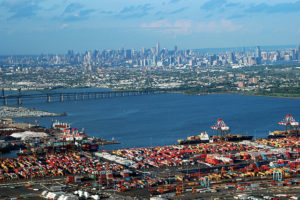 Container shipping’s massive supply-demand imbalance is expected to narrow going into 2017, leading to higher freight rates for box shippers, according to shipping analysts.
Container shipping’s massive supply-demand imbalance is expected to narrow going into 2017, leading to higher freight rates for box shippers, according to shipping analysts.
Commodity prices data provider Platts said that based on a projected GDP growth of around 2% to 3% in 2017, supply will see an increase of around 4% to 5% in the coming year, while global demand for containers will grow by about 2% to 4% year-over-year.
For 2016, Platts said shipping’s capacity growth is estimated at 2.5% and container demand growth at 1.4%.
These are improvements compared to figures in 2015, when container shipping capacity grew 8.5% year-on-year to 18 million TEUs while demand grew just 1%.
The rebalancing of the demand-supply situation has made companies “cautiously optimistic about volumes rising on the back of global economic growth, lower fuel costs, slowdown in newbuild orders and more scrapping of older ships,” said the report.
Most of the demand growth has been in the backhaul routes such as the Europe to Asia and US westbound trans-Pacific routes, where, at times, only 50% of the space is occupied.
The main fronthaul routes are US eastbound trans-Pacific and Asia-Europe, where strong demand growth is critical for a turnaround of the container shipping segment.
Some companies are optimistic about volumes rising on the fronthaul routes as the economy recovers. This will also likely contribute to better freight rates, said Platts.
Meanwhile, the report sees no letup in the trend for alliances and vessel-sharing arrangements. This even as the collapse of Korea’s no. 1 carrier Hanjin Shipping cast doubts on the benefits of such deals.
Consolidation will continue, predicts the report, adding that it brings benefits to the industry. The formation of alliances leads to a more efficient supply chain, boosting coverage of ports, better utilization of vessel space, and lesser idle capacity.
Photo: Maureen from Buffalo, USA





